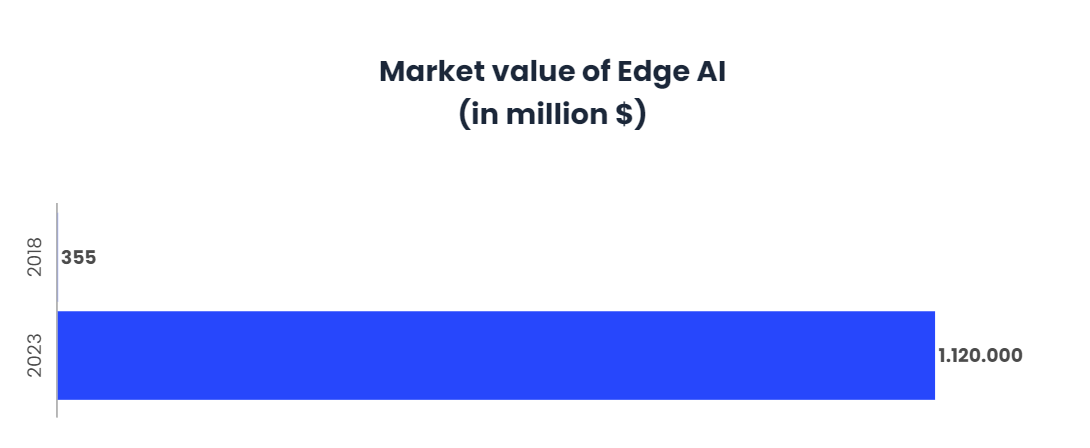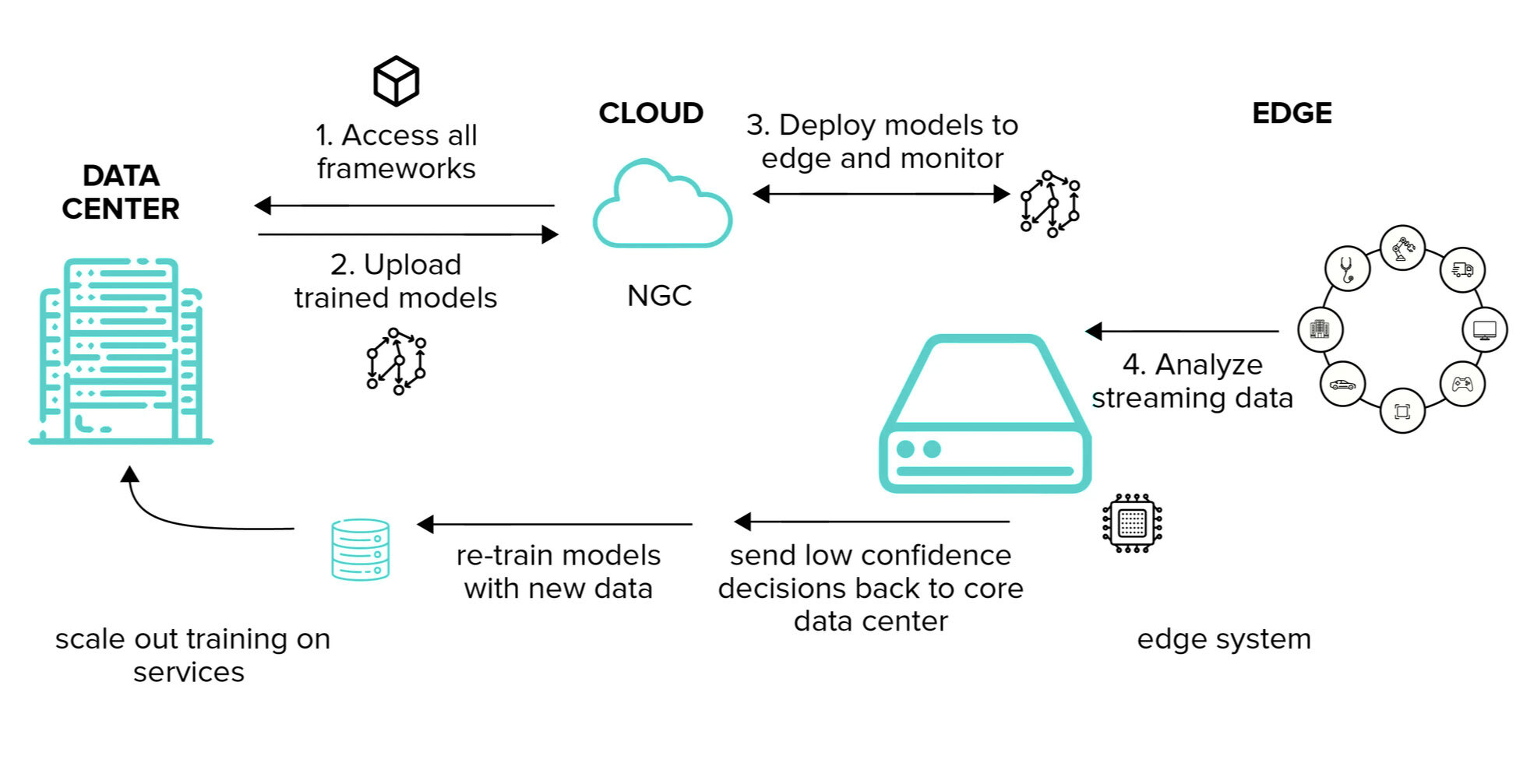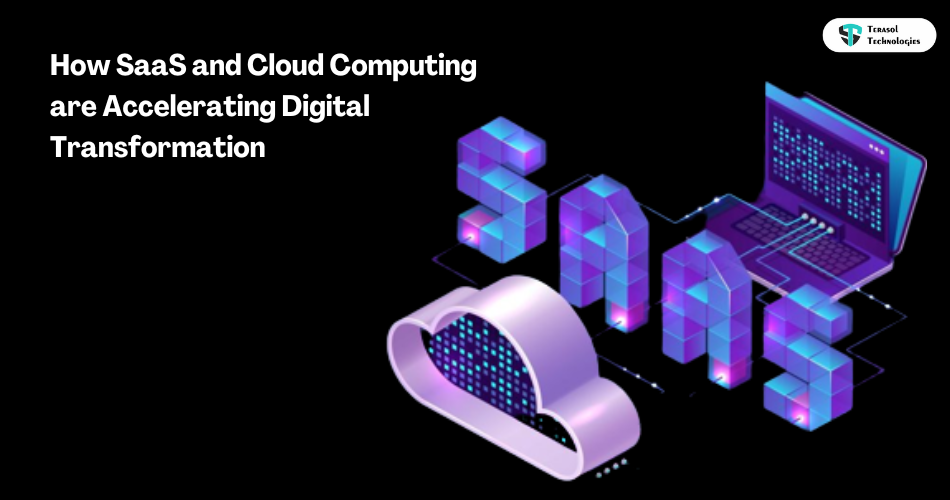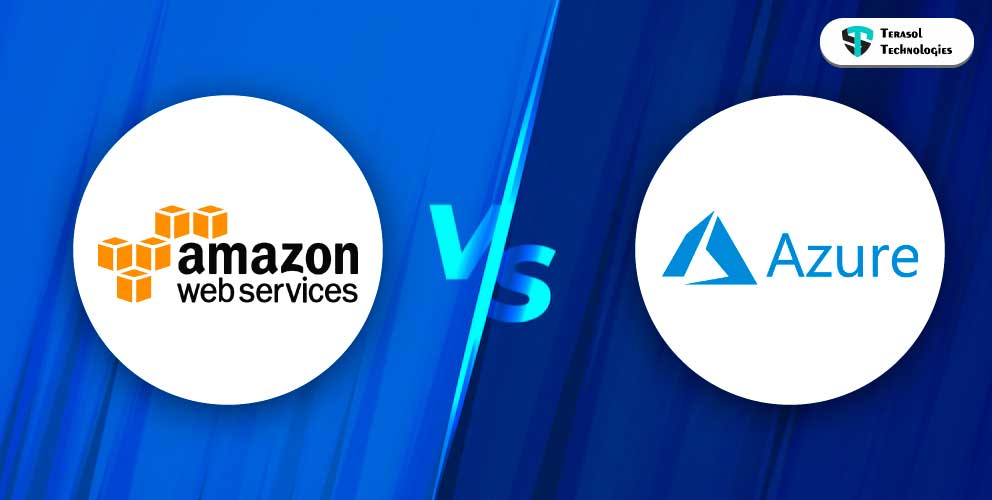Customers are using more devices than ever before, it is more important than ever for organizations to bring the intelligence of AI closer to their customers.
It has opened up previously unimagined opportunities for edge AI.
Simply put, Edge AI is a combination of Edge Computing and Artificial Intelligence.
Edge computing has been discussed and deployed by numerous experts and organizations since the 1990s when content delivery networks were built to supply web and video content from edge servers placed near customers.
Almost every firm today has job duties that could benefit from the application of cutting-edge artificial intelligence.
Indeed, edge applications are propelling the next generation of artificial intelligence in ways that improve our lives at home, work, school, and on the road.
But first, let's take a look at the Edge AI market.

Discover more about edge AI, its benefits, and how it works, even the examples of edge AI use cases and how edge computing and cloud computing interact.
What is Edge AI?
Edge AI refers to the deployment of AI applications in physical devices. The term "edge AI" refers to the fact that the AI computation is done near the user at the network's edge, close to where the data is located, rather than centrally at a cloud computing facility or private data center.
Because the internet has a worldwide reach, the network's edge can refer to any location. It might be a retail store, factory, hospital, or technologies all around us, such as traffic signals, self-driving cars, and phones.
Let’s take a real-life scenario.
We all know Google, Alexa, and Apple Homepod speakers, right?
These have learned words and phrases through Machine Learning and then stored them locally on the device.
So, when a user speaks with an application like as Siri or Google, the voice recording is sent to an Edge network, where it is converted to text using AI and a response is processed. Response times would be seconds without an Edge network, however, they are lowered to less than 400 milliseconds with Edge.
But Why Now?
Every industry is looking to expand automation to improve operations, efficiency, and safety.
Computer programs must understand patterns and conduct jobs regularly and safely to assist them. However, the world is unstructured, and the spectrum of jobs performed by humans encompasses limitless conditions that are impossible to adequately express in programs.
Advances in edge AI have enabled computers and devices, no matter where they are, to work with the "intelligence" of human cognition. Smart AI-enabled programs learn to do identical jobs under diverse conditions, much as in real life.
Three recent advances have increased the efficacy of deploying AI models at the edge-
- Maturity of neural networks: Neural networks and related AI infrastructure have finally progressed to the point where generalized machine learning is possible. Organizations are learning how to train AI models successfully and deploy them in production at the edge.
- Advances in compute infrastructure: To run AI at the edge, powerful distributed processing capacity is necessary. Recent developments in extremely parallel GPUs have allowed neural networks to be executed.
- IoT device adoption: The Internet of Things widespread adoption has fostered the development of big data. We now have the data and devices needed to deploy AI models at the edge thanks to the sudden ability to collect data in every element of a business – from industrial sensors, smart cameras, robots, and more.
When we integrate edge computing with artificial intelligence, we obtain an unbeatable combination.
So, How does Edge AI can help you generate more business?
Edge AI improves decision-making, secures data processing, enhances user experience through hyper-personalization, and reduces costs by speeding up operations and making devices more energy efficient.
Edge computing AI has numerous benefits. Now, regardless of what those are, they are all focused on improving procedures and customer experience.
Real-time Analysis and Automated Response
Edge technology responds to consumer requirements in real-time because it analyses data locally rather than in a faraway cloud delayed by long-distance connectivity. The most prominent Edge AI examples include how software can handle data and machine learning using deep learning algorithms in autonomous Edge AI applications such as autonomous vehicles.
When combined with an autonomous car, the system can evaluate data in a matter of milliseconds, averting accidents in real-time.
Information Security and Privacy
AI can study real-world data without ever exposing it to a human, considerably boosting privacy for anyone whose look, voice, medical image, or other personal information must be analyzed. Edge AI improves privacy even further by storing data locally and transferring only the analysis and insights to the cloud. Even if some data is submitted for training purposes, it can be anonymized to safeguard the identities of the users. Edge AI reduces the difficulties associated with data regulatory compliance while safeguarding privacy.
High availability
Because data processing does not require internet access, decentralization and offline capabilities make edge AI more robust. As a result, mission-critical, production-grade AI applications have increased availability and reliability.
Reduced Cost
Edge can deliver considerable cost savings to your firm due to the scalability of analytics and reduced latency in making crucial choices. In addition to saving time, the edge can conserve bandwidth by reducing the need for data transfer. This also improves the energy efficiency of the equipment.
Although Edge AI necessitates local computer power and hardware investment, it is frequently the most cost-effective alternative.
Scalability
According to IDC, by 2025, there will be 41.6 billion linked IoT devices producing 79.4 zettabytes of data. As data volumes increase, new novel methods for effective analysis and data processing are required. Large volumes of data are frequently involved in edge AI use cases. When processing video image data from hundreds or thousands of various sources at the same time, sending the data to a cloud service is not an option.
Now we know what Edge AI is and its benefits, let’s see how does it work in brief.
How Does Edge AI do its Magic?
To sense, recognize objects, understand speech, talk, walk, operate automobiles and perform other human-like tasks, machines must effectively imitate human intelligence.

AI employs a data structure known as a deep neural network to imitate human cognition. These DNNs are taught to react to specific types of queries by being given multiple samples of those questions as well as accurate responses.
Because of the vast amount of data required to train and employ an accurate model and the demand for data scientists to collaborate on model development.
This training process, known as "deep learning," is usually undertaken in a data center or the cloud.
After training, the model transforms into a "inference engine" capable of solving real-world problems. In edge AI deployments, the inference engine runs on a device in remote locations such as hospitals, factories, vehicles, satellites, and homes.
Let’s say AI detects a problem, it then transfers the problematic data to the cloud for additional training of the original AI model. Typically, the model operates through an API. The model result is subsequently transferred to another software component or, in certain situations, shown for the end user on the application front-end.
It eventually replaces the edge inference engine.
Edge AI is a new approach of executing machine learning and artificial intelligence facilitated by computationally more capable edge devices.
In the typical case, the inference is carried out on a cloud computing platform.
Edge AI models operate in the edge device without requiring constant connectivity to the outside world.
This feedback loop is crucial for model performance improvement; once deployed, edge AI models only get better and smarter.
Let’s Look at Some Use Cases of Edge AI
Edge AI technology arose from the convergence of artificial intelligence, machine learning, and edge computing. This combo was designed to bring deep learning artificial intelligence systems closer to the surface. Edge AI applications are being used in a variety of industries and use cases. Let's take a look at some of the best Edge AI instances.
.jpg?width=1480&name=Edge%20AI%20(1).jpg)
Source: CB Insights
There is always a lot of hype around new technology, but there are several actual reasons behind the Edge AI market's rise.
Let’s take a look at what this new technology holds for us in future.
Edge AI: Trends and the Future
Edge AI is clearly growing in popularity. But this is merely the beginning. There are several trends that have emerged in the domain. Take a look at it.
Increase in edge data centers
More than five million servers will be placed at the edge by 2024. These data centres would only increase in number due to a variety of variables such as:
- 5G network proliferation,
- IoT proliferation,
- SDN, and NFV technology
- AR and VR video streaming
Customer experience
People want services to be smooth and seamless. Data transport delays will be eliminated via edge AI. Furthermore, as sensors, cameras, GPU processors, and other hardware become more affordable, both bespoke and highly productized Edge AI solutions become more widely available.
Edge AI and IIoT convergence
When it comes to AI adoption, manufacturing industries, particularly those that have included IoT, stand out as the most prominent. In the coming years, we will see the convergence of IIoT and Edge AI in use cases centred on sensors and cameras for inspection, preventative, and predictive maintenance.
AI Edge Applications
Edge AI application development enables powering of scalable, mission-critical, and private AI systems. Because Edge AI is still a relatively young technology, many additional applications are envisaged in the near future.
- Smart AI: Vision encompasses computer vision applications such as live video analytics that are used to fuel AI vision systems in a variety of sectors.
- Smart energy: Connected wind farms are one example of a smart energy application. A study compared the data administration and processing costs of a remote wind farm utilising a cloud-only system vs a mixed edge-cloud solution. The edge-cloud solution was found to be 36% less expensive than the cloud-only system.
- Smart Healthcare AI application: Healthcare applications like as remote surgery and diagnostics, as well as patient vital sign monitoring, are largely dependent on edge devices that perform AI at the edge.
- Smart Factory: Applications such as smart machines, are designed to improve safety and production.
Get Started with Edge AI Technology Today
If you've made it this far, you're undoubtedly wondering how Edge AI solutions could help your company.
Edge AI success requires bravery and an open mind: be agile, dare to fail, learn from your failures, and scale your success into new business processes and service development.
It will open up a whole new universe of possibilities in terms of enterprise-level AI-based services and user experience.
Do you want to talk about your ideas?
Feel free to contact our AI experts at Terasol Technologies to discuss how Edge AI solutions could assist your organization, what kinds of use cases are conceivable in your circumstance, and what kinds of hurdles different implementations might face.


